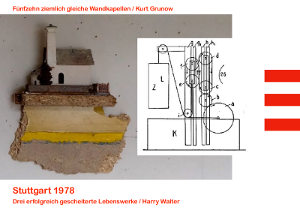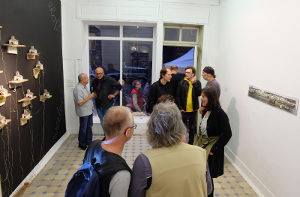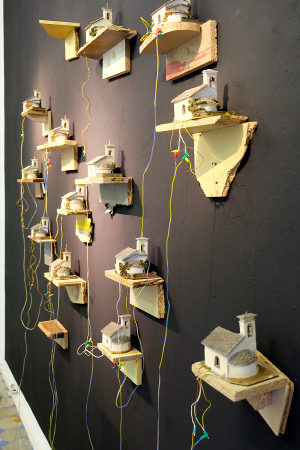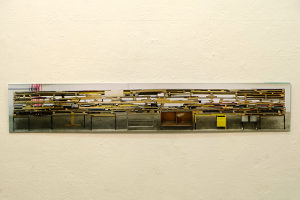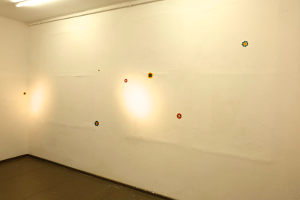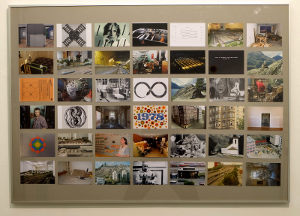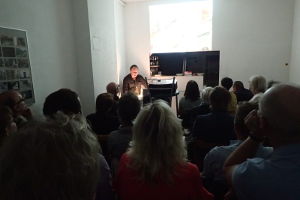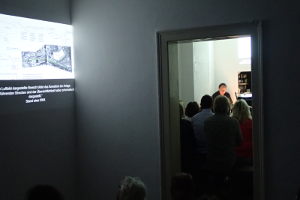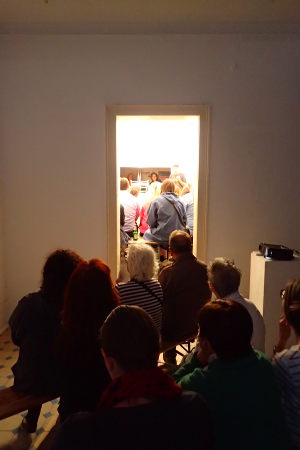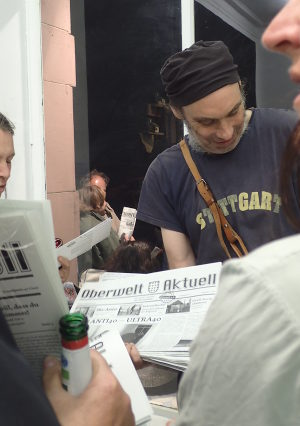(english)1978 war das Jahr, in dem die Saat von
1968 endgültig aufgegangen war. Allerorten schossen unzählige alternative
Projekte in so rascher Folge aus dem Boden, dass Gelingen und Scheitern
nicht mehr klar voneinander unterscheidbar waren. Der Charme jener
Jahre bestand vielleicht darin, dass unter dem Begriff des Alternativen
sowohl praktisch wie theoretisch alles mit allem kombiniert werden
konnte, ohne damit gleich pathologisch auffällig zu werden. Es war
das Jahrzehnt der Bastler und der genialen Dilettanten. Wie in einem
riesigen Weltbild-Baumarkt ließ sich in übervolle Regale greifen und
herausnehmen, was zusammenzupassen schien. Alternativ sein hieß: auf
breiter Front keine Rücksicht mehr darauf zu nehmen, was jeweils jemand
für unmöglich erklärt hatte. Warum sollte eine neue Epoche nicht durch
den elektrischen Klingelton einer Modelleisenbahnkapelle aus Pappe
und Sperrholz eingeläutet werden? Brausende Glockentöne waren, jedenfalls
kurzfristig, außer Mode gekommen. Auf dem Höhepunkt jener Jahre (1978)
in dem auch die „Oberwelt“ und das „Künstlerhaus “ das Licht der Welt
erblickten, wurden hier in Stuttgart, teilweise unbemerkt von der
Öffentlichkeit und völlig unabhängig voneinander, drei groß angelegte
Projekte gestartet, von denen bis heute nicht klar ist, ob sie ein
Ende oder einen Anfang bedeuten: nämlich erstens eine gigantische,
letztlich aber unvollendet gebliebene Modelleisenbahnanlage; zweitens
ein bis heute nicht funktionierendes, ästhetisch jedoch unwiderstehliches
Perpetuum mobile sowie drittens eine Kunstgalerie, die mit fest installierten
Werken der damals aktuellen Kunst einer ägyptischen Grabkammer nahezukommen
suchte. Anhand dieser drei Lebenswerke soll gezeigt werden, wie viel
das mit Stuttgarts spezieller Kessellage und wie viel mit der Kunst
und ihrer Zukunft zu tun hat.
Eröffnungsvortrag Freitag, 21. September, 19:00 Uhr
Besichtigung der Installation bis 6. Oktober
Mo. 21:30 bis 24:00 u.n.V. unter Tel: 01575-6875151
